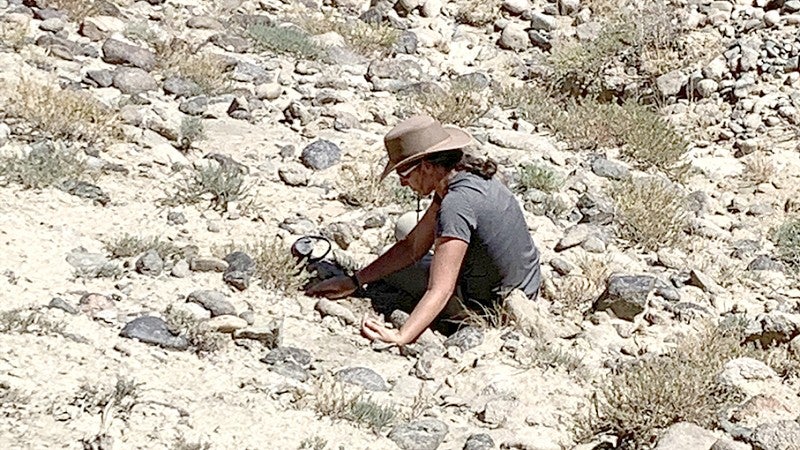A toddler who was found dead in Oregon 58 years ago has finally been identified, thanks to a concerted effort involving local, state and national law enforcement, genetic genealogists and a UO scientist.
Jeanne McLaughlin, an osteologist and forensic anthropologist at the Museum of Natural and Cultural History, was called to assist with the case beginning in 2008, after the Jackson County Sheriff's Office exhumed the body in order to obtain a DNA sample. Osteology is the study of the skeleton and bones.
First discovered in 1963 by a fisherman at Keene Creek Reservoir in Southern Oregon, the child's body was found wrapped in blankets and wire and weighted down with iron molds. Despite efforts by generations of investigators, the Baby Doe's identity remained unknown for decades, becoming the oldest unidentified person case in the state.
All that all changed in June, when the Jackson County Sheriff's Office announced its conclusion that Baby Doe was 2-year-old Steven Crawford, a missing child who had been born in New Mexico in 1960.
 "Advances in DNA science were central to solving the case," McLaughlin said.
"Advances in DNA science were central to solving the case," McLaughlin said.
Following exhumation, McLaughlin helped the investigative team develop a more precise biological profile. Beginning with a round of X-rays, she looked for signs of trauma and other clues about the child's life and death, but she and the team soon determined that they needed more information than X-rays could reveal. So she processed the remains down to a skeleton, which enabled closer examination, extraction of a DNA sample and development of a digital facial reproduction.
Her analysis of the skeleton led McLaughlin to expand the initially assigned age range from 2 years to between 18 months and 2 1/2 years. Her examination also revealed that the child had some distinct features, including two fused teeth and a unique skull shape, which suggested he may have lived with a genetic syndrome.
"Down syndrome was at the top of the list, though we couldn't entirely rule out others without further genetic testing," McLaughlin said.
The DNA was compared across national databases of missing and unidentified persons, but the lead went cold when no matches were found.
"Cold cases typically go in spurts and stalls. You get some new tip or some new technology comes along that breathes life into the case and then you go into a waiting period again," said McLaughlin, who has worked on investigations around the state and the country.
The Baby Doe case finally got its big break in 2020, when the Jackson County Sheriff's Office received a tip through one of its social media accounts and reopened the investigation. The investigative team soon submitted another biological sample, this time in hopes of generating new leads through DNA.
"This time it paid off," McLaughlin said. "The genealogy was the ticket."
CeCe Moore, a genetic genealogist at Parabon NanoLabs, searched an open-source DNA repository and located two potential siblings of the unidentified toddler. A subsequent interview with a half-brother in Ohio revealed that he had a younger brother with Down syndrome who'd gone missing decades prior. Soon after, investigators located Stevie Crawford's birth certificate.
"Since then, many more family members have been located, and the family has been very involved since the identification was made," McLaughlin said.
She noted that families often experience relief when a missing person case finally resolves.
"They have an answer," she said. "Not knowing has to be the worst kind of torture. I can't imagine hearing, after 58 years, 'Here's your loved one. We know where he is, we know a little bit about what happened.'"
McLaughlin commended the efforts of the many people involved in the case over the years, noting the longevity of the investigation and the ongoing energy put into the case.
"It had been through multiple teams of investigators spanning three generations, but cases like these stick with you," she said. "Investigators stay invested. And this case in particular showcases what can happen when everyone comes together for a common cause."







